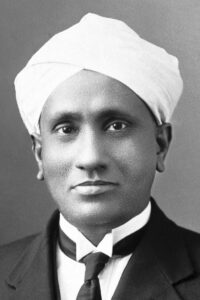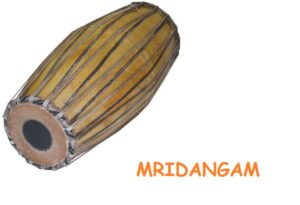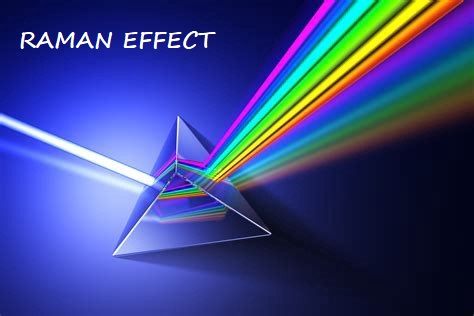Early Days
- Sir Chandrasekhara Venkata Raman was born on 7 November 1888 in Tiruchirapalli, Tamil Nadu and lived till 21 November 1970.
- He was an Indian physicist known for his work in the field of light scattering.
- Raman completed his secondary and higher secondary education from St Aloysius' Anglo-Indian High School.
- He obtained a B.A degree from the University of Madras with Honours in Physics from Presidency College, Chennai in 1904.
- He published his first scientific paper on "Unsymmetrical diffraction bands due to a rectangular aperture" in the British journal Philosophical Magazine in 1906.
- He completed his Masters with distinction from the University of Madras in 1907.
- His second paper published in the same journal that year was on surface tension of liquids.
- He joined the Indian Finance Service in Calcutta as Assistant Accountant General.
- There he came to know about the Indian Association for the Cultivation of Science (IACS), the first research institute in India, which allowed him to do independent research and where he made his major contributions in acoustics and optics.
Raman's Scientific Contributions
Musical Sound
- Sir C.V Raman was interested on the scientific basis of musical sounds.
- He was inspired by Hermann von Helmholtz's The Sensations of Tone, the book he studied when he joined IACS.
- He worked out the theory of transverse vibration of bowed string instruments based on superposition of velocities.
- One of his earliest studies was on the wolf tone in violins and cellos.
- He studied the acoustics of various violin and related instruments, including Indian stringed instruments and water splashes.
- He even performed "Experiments with mechanically-played violins".
- Raman also studied the uniqueness of Indian drums.
- His analyses of the harmonic nature of the sounds of Tabla and Mridangam were the first scientific studies on Indian percussions.
- He wrote a critical research on vibrations of the soft and loud string that was known as Kaufmann's theory.
- In 1921, he managed to study how sound travels in the Whispering Gallery of the dome of St Paul's Cathedral in London that produces unusual sound effects.
- His work on acoustics was important both experimentally and conceptually to his later works on optics and quantum mechanics.
Blue Colour of the Sea
- Raman started to investigate scattering of light as a part of his broadening venture on optics starting in 1919.
- His first phenomenal discovery of the physics of light was the blue colour of sea water.
- In September 1921 while he was travelling from England to Mumbai in a Ship, he studied the blue colour of the Mediterranean Sea using simple optical equipment, a pocket-sized spectroscope and a Nicol prism in hand.
- In 1910, Lord Rayleigh had the best explanation for the colour of the sea. He said,
"The much admired dark blue of the deep sea has nothing to do with the colour of water, but is simply the blue of the sky seen by reflection".
- Rayleigh had rightly described the nature of the blue sky by a phenomenon now known as Rayleigh scattering, the scattering of light and refraction by particles in the atmosphere.
- Raman could view the water using Nicol prism to avoid the influence of sunlight reflected by the surface. He described how the sea appears even more blue than usual.
- Raman finished an article "The colour of the sea" that was published in the November 1921 issue of Nature.
He thought,
"Looking down into the water with a Nicol in front of the eye to cut off surface reflections, the track of the sun’s rays could be seen entering the water and appearing by virtue of perspective to converge to a point at a considerable depth inside it."
- He conducted further research at IACS. By early 1922, Raman came to a conclusion on this. He published,
"In this phenomenon, as in the parallel case of the colour of the sky, molecular diffraction determines the observed luminosity and in great measure also its colour."
- He also said that he will publish a theoretical calculation and experimental observations of the intensity of molecular scattering in water.
- Sir C.V Raman published an elaborate experimental finding in 1923.
- His subsequent study of the Bay of Bengal in 1924 provided the full evidence.
"It is now known that the intrinsic colour of water is mainly attributed to the selective absorption of longer wavelengths of light in the red and orange regions of the spectrum, owing to overtones of the infrared absorbing O-H (oxygen and hydrogen combined) stretching modes of water molecules."
Raman Effect
- Raman's second important discovery on the scattering of light was a new type of radiation which was called the Raman effect.
- In 1923 his experiments showed the possibility of other light rays formed in addition to incident ray when sunlight was filtered through a violet glass in certain liquids and solids.
- C.V Raman believed that this was a "trace of fluorescence".
The Scattering Experiments
- K.S Krishnan, a new Research Associate, started the experiment in the beginning of January 1928.
- On 7 January, he discovered that no matter what kind of pure liquid he used, it always produced polarized fluorescence within the visible spectrum of light.
- Raman saw the result and he and Krishnan named the new phenomenon as "modified scattering" with reference to the Compton effect as an unmodified scattering.
- On 28 February 1928, they obtained spectra of the modified scattering separate from the incident light.
- Raman had invented a type of spectrograph for detecting and measuring electromagnetic waves.
- Now they could use the instrument using monochromatic light from a mercury arc lamp which penetrated transparent material and was allowed to fall on a spectrograph to record its spectrum. The lines of scattering could now be measured and photographed.







